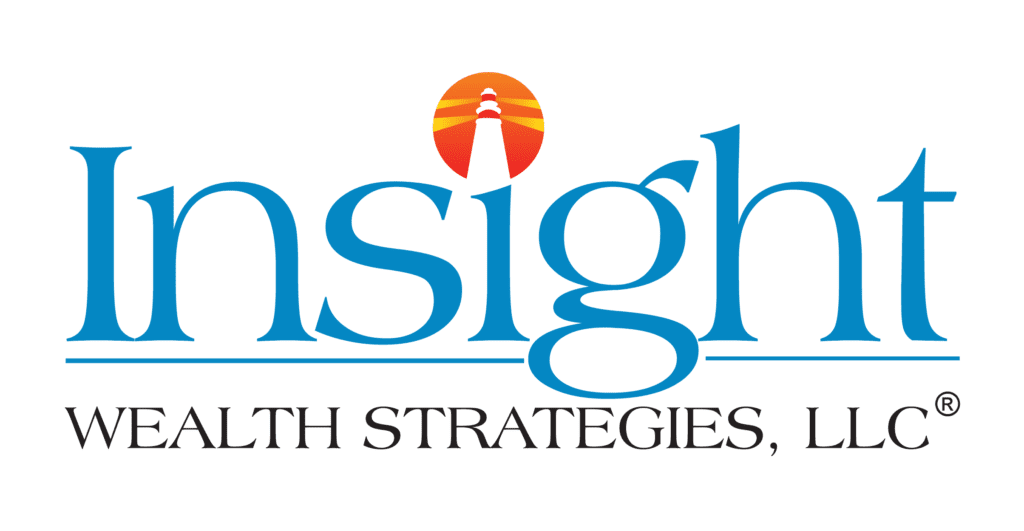Maximizing Year-End Tax Strategies for High-Income Earners
As the year comes to a close, high-income earners have a valuable window of opportunity to engage in tax planning strategies that can greatly impact their financial well-being by ensuring they remain in a favorable tax bracket. Year-end tax planning is important for those looking to minimize tax burdens, overall tax lability, and maximize wealth preservation by effectively managing tax deductions. By leveraging strategies such as maximizing retirement contributions, tax-loss harvesting, and charitable giving, high-income individuals can effectively reduce taxable income and enhance financial outcomes. With careful planning, these tax saving strategies not only support immediate savings but can also contribute to long-term financial stability.
Why Year-End Tax Planning Matters for High-Income Earners
Benefits of a Year-End Portfolio Review
As the year comes to a close, high-income earners have a valuable window of opportunity to engage in some strategic tax planning that can greatly impact their financial well-being. Year-end tax planning is important for those looking to minimize tax burdens and maximize wealth preservation. By leveraging strategies such as maximizing retirement contributions, tax-loss harvesting, and charitable giving, high-income individuals can effectively reduce taxable income and enhance financial outcomes. With careful planning, these actions not only support immediate savings but can also contribute to long-term financial stability.
Tailored Tax Planning for High-Income and High-Net-Worth Individuals
High-income and high-net-worth individuals often face complex tax challenges that require customized tax strategies beyond standard tax planning. Tailored tax approaches can address these unique needs by considering advanced strategies like asset location optimization, charitable trusts, and income deferral. Collaborating with advisors experienced in high-net-worth financial planning helps ensure that these strategies are effectively designed and implemented, helping clients preserve more wealth, manage tax obligations, and align tax planning with broader financial goals.
How to Maximize Year-End Tax Savings as a High-Income Earner
Increase Retirement Contributions
One of the most effective ways for high-income earners to reduce taxable income before year-end is by maximizing contributions to tax-advantaged retirement accounts, such as 401(k)s, IRAs, and Health Savings Accounts (HSAs). For 401(k) accounts, the annual contribution limit of $23,000 for 2024, allows for substantial pre-tax savings, and those over 50 can take advantage of catch-up contributions of $7,500 for 2024, which provides an additional opportunity to defer income1. High-income earners who meet the income qualifications for IRAs can also contribute to reduce taxable income2, while HSAs offer triple tax benefits when used for qualified healthcare expenses3. Maximizing contributions to tax advantage accounts can significantly reduce a high-income earner’s adjusted gross income (AGI) and taxable income.
Key Deductions and Credits to Leverage Before Year-End
Above-the-Line Deductions for High-Income Earners
Above-the-line deductions are valuable tools for high-income earners to lower their Adjusted Gross Income (AGI) directly, often leading to additional tax savings. Contributions to Health Savings Accounts (HSAs) and Traditional IRAs are among the most effective, allowing for tax-deferred growth while reducing taxable income in the current year. For self-employed individuals, deductions for business-related expenses such as home office, health insurance premiums, and retirement plan contributions provide even more opportunities to reduce AGI. Strategic use of tax credits, such as the child tax credit, can provide valuable reductions in tax bills for high-income earners. By taking advantage of these deductions before year-end, high-income earners can improve their overall tax position while adhering to annual contribution limits.
Maximize Below-the-Line Deductions with Itemizing
For high-income earners who choose to itemize, year-end planning is crucial to maximize tax benefits from below-the-line deductions. Key itemized deductions include mortgage interest, medical expenses, and state and local taxes (SALT)4. By strategically timing certain expenses, individuals can enhance the tax benefits of itemizing; for example, making an early mortgage payment or accelerating medical expenses into the current year can help meet deductibility thresholds. Since the SALT deduction is capped, it’s important to prioritize other deductible expenses to maximize total tax savings.
Year-End Investment Strategies to Lower Tax Liability
Harvest Tax Losses Before Year-End
Tax-loss harvesting is a powerful year-end strategy that allows high-income and high-net-worth investors to offset capital gains by selling investments at a loss. By identifying assets that have decreased in value, investors can “harvest” these losses to offset gains from other investments, effectively lowering their tax liability. To maximize this strategy, high-net-worth individuals should review their portfolios before December 31 and identify underperforming assets. This proactive approach helps investors reduce taxable income while maintaining overall investment goals, especially when losses are reinvested in similar assets to preserve portfolio value.
Funding Your Donor-Advised Fund
Contributing to a donor-advised fund (DAF) by year-end is an effective tax-saving strategy for high-income earners, providing flexibility in charitable giving along with significant tax benefits. DAFs can accept a range of asset types, including cash, stocks, and other appreciated securities. While cash donations offer a straightforward way to support charitable organizations, contributing appreciated assets like stocks or mutual funds can offer additional tax advantages, especially for high-net-worth individuals holding long-term investments.
Donating appreciated assets to a DAF can help reduce or eliminate capital gains tax on the asset’s growth. This means that by donating a stock with a high increase in value, donors avoid paying capital gains taxes they would have faced if they sold the asset outright. Additionally, they receive a charitable tax deduction for the asset’s full fair market value at the time of the donation5. This strategy allows high-income earners to support causes they care about while maximizing tax efficiency and preserving more wealth in the process.
Consider Tax-Efficient Accounts and Investment Choices
High-income earners can strategically reduce their tax burden by leveraging tax-efficient accounts and investments. Tax-deferred accounts like 401(k)s and 529 plans allow investments to grow tax-free until withdrawal, reducing current taxable income and supporting long-term goals like retirement and education. By maximizing contributions to these accounts each year, high-income individuals can take advantage of both immediate tax savings and significant future growth potential. The power of tax deferral becomes especially impactful over time, as earnings compound without the drag of yearly taxes.
In addition to tax-deferred accounts, tax-exempt investments like Roth IRAs offer unique tax advantages. Roth IRAs provide tax-free growth and tax-free withdrawals in retirement, ideal for building a source of tax-free income in the future. For greater tax efficiency, it’s often wise to hold tax-efficient assets, such as index funds, in taxable accounts and place tax-heavy assets like dividend-paying stocks in tax-advantaged accounts. By aligning assets with the right account types, high-income individuals can minimize tax consequences and help optimize their wealth-building strategies.
Important Tax Law Changes Impacting Year-End Strategies
Key SECURE Act 2.0 Updates for High-Income Earners
Recent updates from the SECURE Act 2.0 have introduced several changes that impact retirement planning and tax strategies for high-income earners. One of the most notable adjustments is the change to Required Minimum Distributions (RMDs). The age at which individuals must begin taking RMDs from retirement accounts has been pushed back to 73, offering additional flexibility for those looking to delay taxable withdrawals and continue growing their retirement funds tax-deferred6. For high-income earners who do not need immediate access to these funds, this delay provides an extended period for tax-efficient growth, allowing them to optimize their withdrawal strategies over a longer time frame.
In addition to changes in RMD timing, the SECURE Act 2.0 has increased contribution limits for retirement accounts. This includes higher limits for 401(k) catch-up contributions, which allow those over 50 to contribute even more toward their retirement on a pre-tax basis. The Act also permits IRA contributions beyond the age of 70½ for individuals still earning income6, broadening opportunities for high-income earners to invest more in tax-advantaged accounts as they continue to work later in life.
Planning for the Expiration of the 2017 Tax Cuts
With the anticipated expiration of the 2017 Tax Cuts and Jobs Act (TCJA) provisions after 2025, high-net-worth individuals may face higher tax rates and reduced deductions. The TCJA introduced lower tax rates for individuals and expanded the standard deduction, but these benefits are set to sunset in just a few years. For high-income earners, this could mean higher federal income taxes and the loss of certain deductions, which would ultimately reduce after-tax income. Now is an opportune time to evaluate tax strategies that leverage current benefits, such as accelerating income or deductions, to take advantage of lower rates before any potential changes take effect.
For more insights on proactive financial strategies, high-income individuals can explore financial planning in Houston or connect with our team for San Ramon financial planning. Our advisors can help create a customized plan that anticipates tax changes and ensures your wealth strategy is resilient in the face of evolving tax laws.
Why Work with a Financial Advisor for Year-End Tax Planning?
Navigating year-end tax planning can be complex, especially for high-net-worth individuals with intricate financial portfolios. Working with an experienced financial advisor offers the advantage of customized tax strategies designed to maximize savings and ensure compliance with ever-evolving tax laws. An advisor can help you identify and implement advanced strategies—such as tax-loss harvesting, charitable giving, and retirement account optimization—while keeping your unique financial goals in mind.
Beyond tax savings, a financial advisor brings a broader wealth management perspective, aligning tax strategies with long-term goals like retirement, estate planning, and investment growth. This holistic approach ensures that every tax decision contributes to your overall financial health, helping you to preserve and grow your wealth in a way that supports your objectives. To explore how tailored tax planning can benefit your wealth strategy, consider our wealth management services in Houston or San Ramon wealth management team. Working with a trusted advisor can give you peace of mind as you approach year-end and position yourself for future financial success.
Reviewed by,

Brian Stormont, CFP®
Brian Stormont is a comprehensive, fee-only financial advisor with Insight Wealth Strategies who began his career in the financial industry in 2000. His expertise encompasses retirement planning, investment planning, estate planning, and high-level strategies to help business owners and individuals minimize their income taxes.
Sources:
- https://www.irs.gov/retirement-plans/plan-participant-employee/retirement-topics-401k-and-profit-sharing-plan-contribution-limits
- https://www.irs.gov/retirement-plans/ira-deduction-limits
- https://www.morganstanley.com/articles/health-savings-account-retirement-tax-advantages
- https://taxfoundation.org/taxedu/glossary/salt-deduction
- https://www.fidelitycharitable.org/guidance/charitable-tax-strategies/charitable-contributions.html
- https://www.irs.gov/retirement-plans/retirement-plan-and-ira-required-minimum-distributions-faqs
Insight Wealth Strategies, LLC is a Registered Investment Adviser. Advisory services are only offered to clients or prospective clients where Insight Wealth Strategies, LLC and its representatives are properly licensed or exempt from licensure. Past performance is no guarantee of future returns. Investing involves risk and possible loss of principal capital. No advice may be rendered by Insight Wealth Strategies, LLC unless a client service agreement is in place.
Insight Wealth Strategies, LLC (IWS) and its affiliates do not provide tax, legal or accounting advice. This material has been prepared for informational purposes only, and is not intended to provide, and should not be relied on for, tax, legal or accounting advice. You should consult your own tax, legal and accounting advisors before engaging in any transaction.
Certified Financial Planner Board of Standards Inc. owns the certification marks CFP®, CERTIFIED FINANCIAL PLANNER™, in the U.S., which it awards to individuals who successfully complete CFP Board’s initial and ongoing certification requirements

